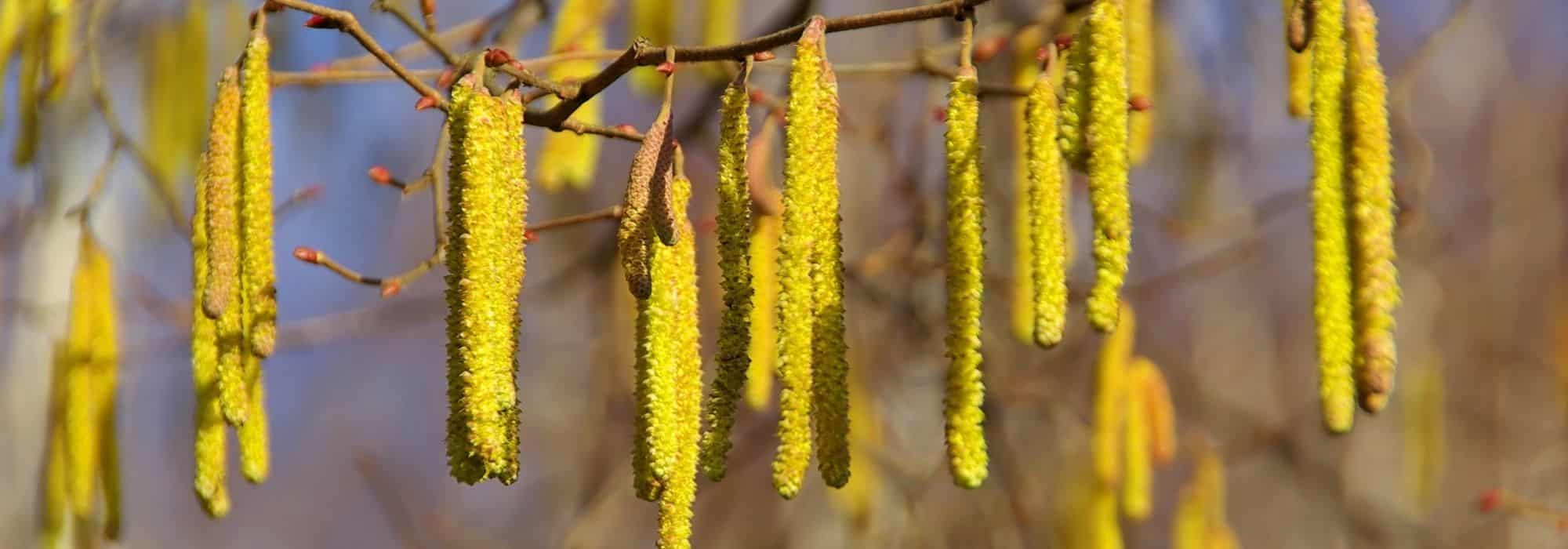
How to pair the hazel tree?
Discover our ideas to showcase the hazel tree
Contents
A beautiful and large bush, the hazel (Corylus) is remarkable for its many advantages. Beyond producing hazelnuts quite quickly, the hazel is often valued for the flexibility and durability of its wood. It is also very hardy and benefits from rapid growth. As for its flowers (the famous aments) that bloom from January to March, they are particularly melliferous and rich in pollen. Widely found in our regions, the hazel also has undeniable ornamental appeal. While the common hazel (Corylus avellana) is often used in free and country hedges, the backdrop of a flowerbed will be enhanced by the presence of a purple-leaved hazel (Corylus maxima). And the splendid contorted hazel (Corylus avellana ‘Contorta’) deserves to be planted alone in the middle of a lawn to showcase its sinuous branches. Discover with us how to make the most of the beauty of the hazel in various plant arrangements.
In a free countryside hedge
Naturally, hazel (Corylus) has a bushy habit and forms a dense, closed crown. Tending to sucker easily, this large bush quickly creates a thick clump. Moreover, it benefits from rapid growth. The hazel, particularly the common hazel (Corylus avellana), is therefore the ideal candidate for integrating into a free and rustic hedge, which it will beautify with its pendulous catkins in February or March. With a height of 4 to 6 metres and a wide spread, the hazel will quickly fill a hedge to protect you from prying eyes, shelter you from the wind, or simply enclose the back of your garden.
By pairing the common hazel with the yellow catkins of the very elegant golden hazel (Corylus avellana ‘Aurea’), you will create a vibrant scene. Especially if you combine them with other bushes such as the variegated dogwood, the serviceberry with its splendid white flowering, an Eleagnus angustifolia, or a black elder (Sambucus nigra) for its berries. If you add a rowan (Sorbus aucuparia) or a hawthorn (Crataegus monogyna), you will surely delight the birds that will find shelter and food there. And you will make your hedge a reservoir of biodiversity.

Around Corylus avellana ‘Aurea’, serviceberry, Cornus alba, rowan, and hawthorn form a rustic hedge
In a grove at the back of the garden
You have a vast garden and wish to break its monotony by adding some verticality and volume? The grove will not only enhance your horizon but also welcome the surrounding wildlife, while shielding you from winds and neighbours. It serves as a transitional area that brings calm and serenity.
Of course, careful consideration is essential before choosing the various species that will make up your grove. You need to anticipate potential inconveniences for your neighbours when the trees reach maturity or the shade they will cast. In this regard, François shares all his practical tips for creating a grove in your garden.
To create a very natural scene, rich in diversity, it is crucial to multiply ornamental species throughout the seasons. For instance, the purple hazel ‘Rode Zellernoot’ is of interest in summer as well as in the heart of winter: its purple-pink catkins colour the garden from January, followed by purple foliage turning to bronze-green in summer. Its hazelnuts display a lovely reddish-brown hue. As it easily reaches 6 metres, it will fit perfectly within a grove alongside white birches (Betula pendula ‘Golden Cloud’) with beautiful silver bark and golden foliage, a goat willow (Salix caprea) with silver catkins, and a Liquidambar styraciflua ‘Golden Sun’ with vibrant colours throughout the year.
Discover other Corylus - Hazelnuts
View all →Available in 1 sizes
Available in 4 sizes
Available in 1 sizes
Available in 3 sizes
Available in 1 sizes
Available in 3 sizes
Available in 1 sizes
Available in 2 sizes
Available in 1 sizes
Available in 1 sizes
In a winter garden
It is when bare and free of its leaves that the contorted hazel reveals all its beauty. Its silhouette, full of curves and arabesques, presents itself to our eyes without any complexes. It must be said that its twisted and sinuous branches intertwine harmoniously, allowing its colourful catkins, bursting with pollen, to shine. The undulation of its branches particularly enlivens the winter garden, especially if the hazel is planted alone in the centre of a lawn.
If you set your sights on Corylus avellana ‘Contorta’, you will benefit from an unusual habit accentuated by yellow, pendulous catkins, swaying in the breeze. In contrast, Corylus avellana ‘Red Majestic’ offers a flowering and foliage in shades of purple. As their aesthetic allows them to stand alone, highlight contorted hazels with simple carpets of spring bulbs such as snowdrops (Galanthus), crocuses, anemones, chionodoxa…
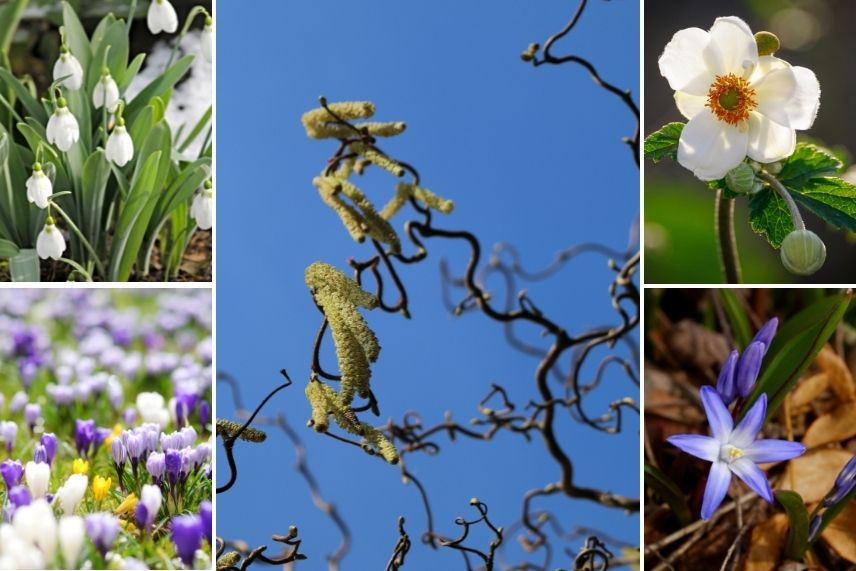
When planted alone, the contorted hazel will be beautifully complemented by a carpet of snowdrops, crocuses, anemones, or chionodoxa
Read also
Choosing the right hazel: buyer's guideIn the background of the flowerbed
In the back garden or along the edge of a property, a hazel tree can be the central pillar of a bed formed of decorative foliage and subtle flowering. A Lambert hazel (Corylus maxima ‘Juningia’) or a purple hazel (Corylus maxima ‘Purpurea’) can adorn the background of a bed with their opulence alongside an Acer palmatum. With their red foliage for the Lambert hazel or purple for its counterpart, these two small trees will create a contrast with clumps of ferns, hostas, or heucheras, or even a Euonymus fortunei ‘Emerald’n Gold’ for its carpeting effect. Grasses such as Stipa, Miscanthus, or Acorus with their fine, graphic foliage complete the picture.
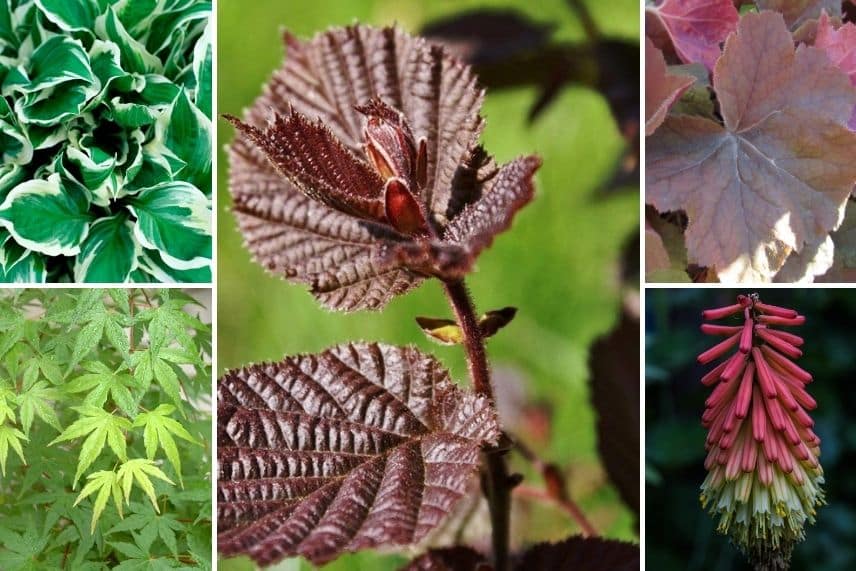
Around Corylus maxima purpurea, hosta, Acer palmatum, heuchera, and Kniphofia
To enhance the scene, feel free to add a few flowering perennials that will bring their subtle and elegant touch. Some upright spikes of Red Hot Poker (Kniphofia) offer their flamboyant flowering.
- Subscribe!
- Contents
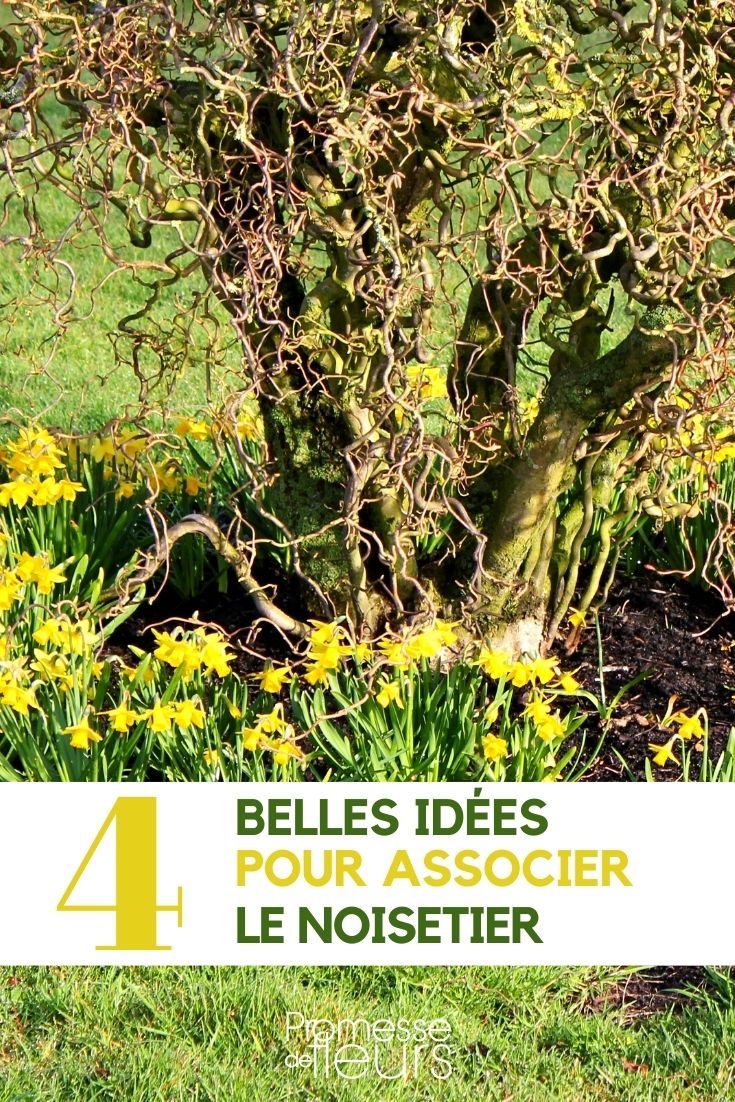































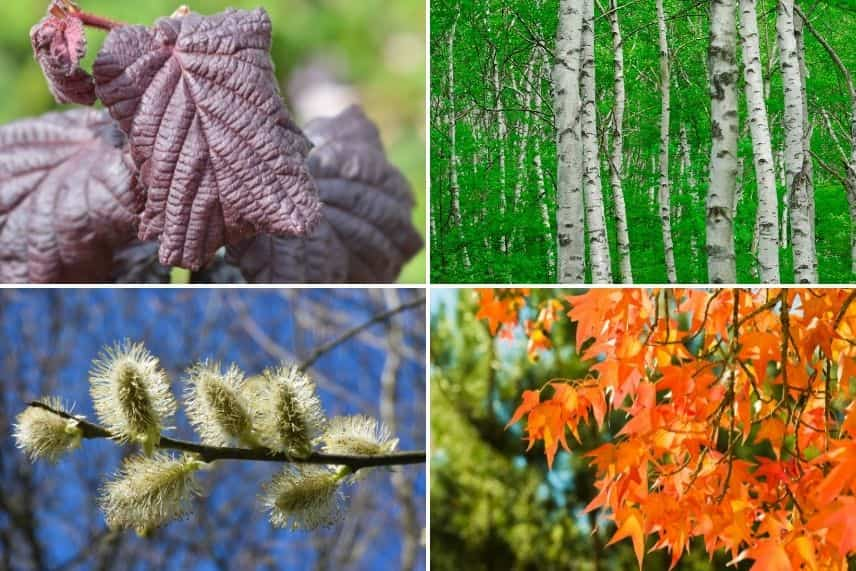
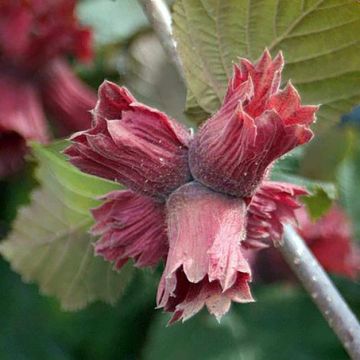
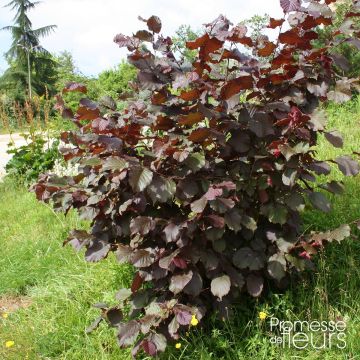
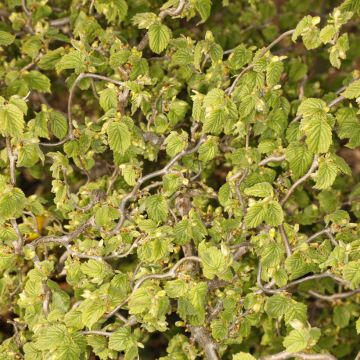




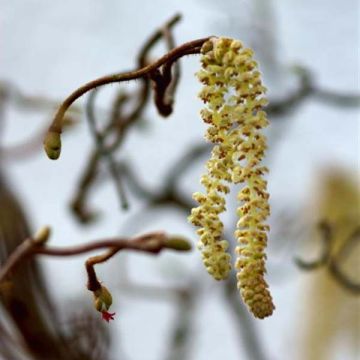
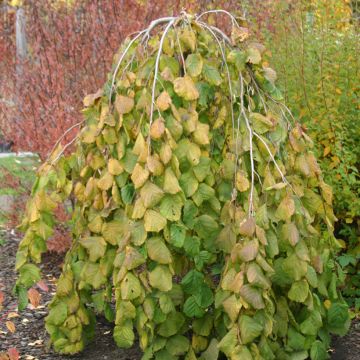
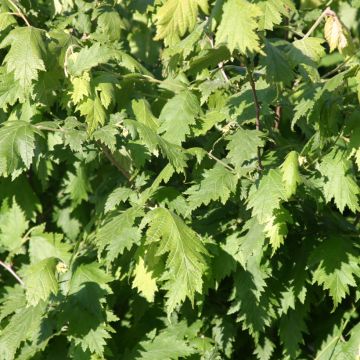
Comments